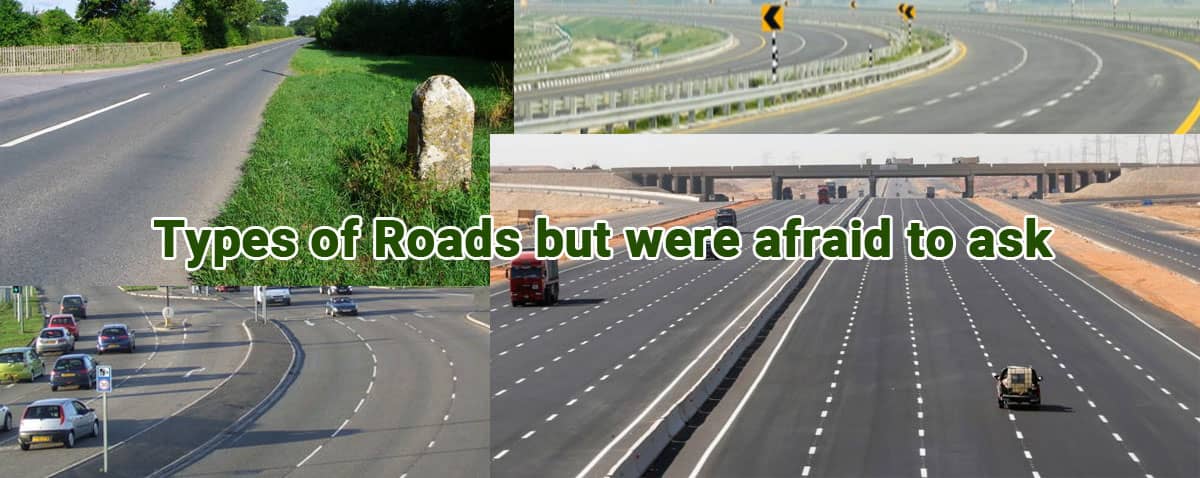Types of Roads but were afraid to ask

Every country relies upon road transportation. There are several types of roads, such as paved ways, routes, and thoroughfares. It allows you to travel to your destination by car. Each type of road has its own classification based on various criteria such as materials, locations, traffic & much more.
Types of Roads depending on Accessibility & Speed
National Highways
All major cities in a country are linked to the capital by national highways. These roads extend across the country. All national highways have at least two lanes.
State Highways
The state highway system is the second main highway system that connects the state's significant areas. These highways eventually connect with national highways.
District Road
Connecting metropolitan areas to markets and local highways are district roads. District major roads connect the district's headquarters with the region's main parts, while district minor roads are situated within the region.
Rural Road
Village roads connect nearby villages. Some of these roads connect to nearby towns and districts. Village roads often consist of low-quality roads due to low traffic.
Based on Material
Earthed Road
The surface of earthen roads is covered with soil. Earthen roads are cheaper than any other type. Low-traffic areas usually use earthen roads. Drainage systems must provide excellent results over a long period. Construction vehicles need them when constructing a building or when moving army vehicles during wartime. Temporary roads are built for transporting construction vehicles. Earthen roads are not the best choice during the monsoon season, as they can wash away during heavy rains.
Gravel Road
When compared with earthen roads, gravel roads are a better option. Pavement material is composed of compacted gravel and earth. Among all types of roads, gravel roads are the second cheapest, and they are also better than earthen roads.
Kankar Road
Limestone impure in nature is Kankar. Kankar roads can be constructed anywhere lime is plentiful. The quality and performance of the Kankar roads are poor.
Concrete Road
In the case of concrete roads, pavement is constructed using cement concrete. This type of road is very popular and costly. Due to their rigidity, it requires less maintenance. High traffic areas are suitable for concrete roads. They have joints and require a longer construction period.
Water Bound Macadam Road
WBM roads also go by Water Bound Macadam. They consist of crushed stone or aggregate. WBM roads consist of several layers. The surface covers in 10cm of aggregate, sprinkled with water and then rolls for a better finish. Compared to Murram and Earth roads, these roads are superior. WBM lay usually in pits in cities.
Murram Road
Weathering of igneous rocks produces the mineral Murram. It is a gravelly lateritic material. When a road is constructed with Murram as its primary material, it is called a Murram road. Murram has a higher density than gravel, which in turn provides a better surface finish and compaction than these two types of road.
Bituminous Road
Around the world, bituminous roads are common. These roads receive the most use. Because they are low in cost and conducive to driving conditions, they are the most popular. Subgrade soil conditions determine the thickness of bituminous roads.
Based On Traffic Volume
Low Traffic Road
Low traffic roads are those that carry fewer than 400 vehicles per day on average. The best examples of these types of roads are village roads and rural roads.
Medium Traffic Road
Medium traffic roads are those with an average daily traffic volume of 400 to 1000 vehicles. So, district roads fall into this category.
High Traffic Road
High traffic roads are those that carry more than 1,000 vehicles per day. So, interstates and highways fall into this category.
Based on Traffic Type
Motorways
The term expressway also applies to motorways. Highways built for fast and free flow of traffic are expressways. To travel quickly and safely, expressways avoid sharp curves, busy intersections, and train junctions. High-speed vehicles can travel with ease on expressways.
Pedestrian ways
As the name suggests, pedestrian ways are paths or routes designed exclusively for pedestrians where all vehicles are strictly prohibited.
Cycle Tracks
There are bicycle tracks on both sides of the road so that cyclists can travel safely.
Based On Rigidity
Flexible Road
As a result, they can disintegrate easily with heavy traffic if they are not properly maintained. The pavement surface of flexible roads is flexible. The only exception is concrete roads.
Rigid Road
Surface courses, Base courses, and Subgrade courses are the three layers that make a road non-flexible. For example, cement concrete roads are non-flexible.
With heavy traffic, flexible roads can easily disintegrate because of their flexible surface. They require proper maintenance to prevent this.
Based on Topography
Plain Area Road
A plain area road is one with few bends, ups, and downs. It is easier to plan and build these roads.
Hilly Area Road
One can see frequent steep bends and rises and falls on the roads because they locate in hilly areas. Compared to plain roads, it requires more capital and takes longer.
